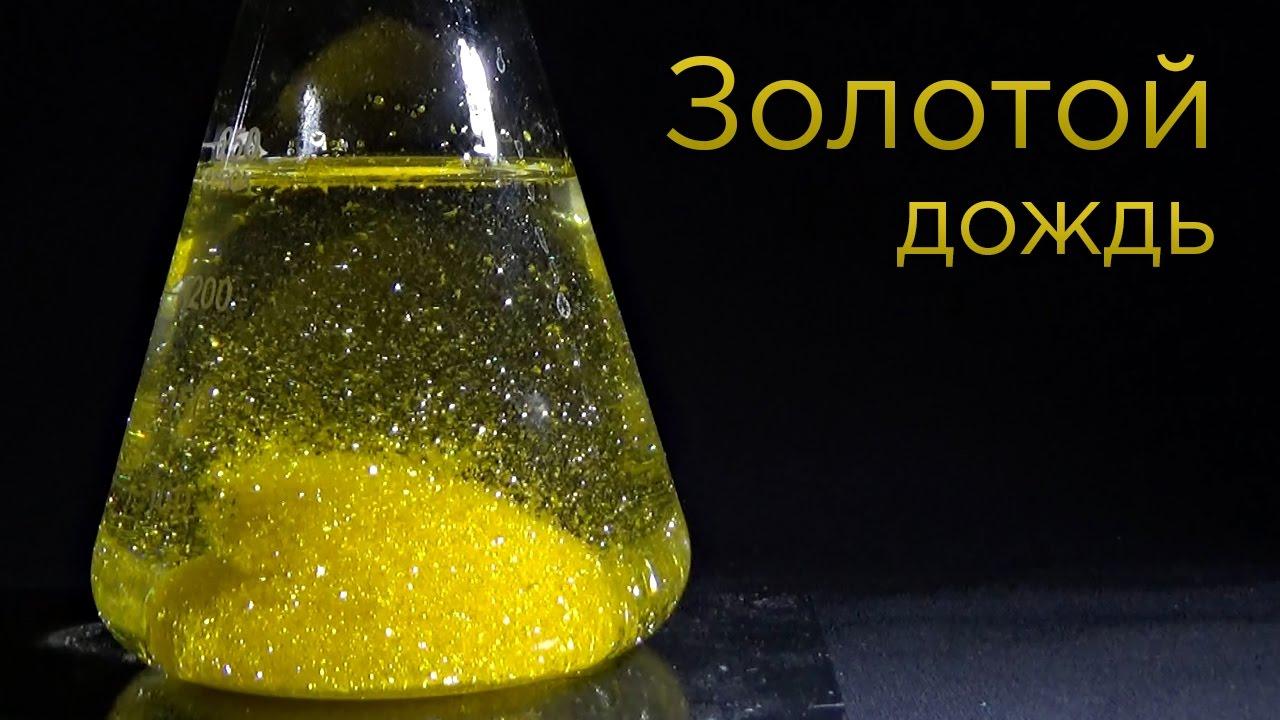
Golden Rain
Readily available reagents - any soluble salt of lead and potassium iodide - will allow for an interesting experiment. However, during the experiment, we must remember to be especially careful when working with toxic lead compounds. During the test, we do not eat or drink, and after work, we carefully wash our hands and laboratory glassware. In addition, it is a permanent recommendation for the experimental chemist.
Let's prepare the following reagents: highly soluble salt of lead (II) - nitrate (V) Pb (NO3)2 or acetate (CH3Chief operating officer)2Pb- and potassium iodide KI. We prepare solutions from them with a concentration of up to 10%. A lead salt solution is poured into the flask, and then a small volume of KI solution is added. After stirring the liquid immediately formed a yellow precipitate of lead (II) iodide PbI.2 (photo 1):
Pb2+ + 2i- → PbI2↓
Avoid excess potassium iodide solution, as the precipitate dissolves at higher concentrations of iodide ions (complex compound K2[PbI4]).
The yellow precipitate is more soluble in hot water. After placing the flask in a larger vessel of boiling water (or heating it over a burner flame), the precipitate soon disappears and a colorless (photo 2) or only a slightly yellowish solution. As the flask cools, crystals begin to appear in the form of golden plaques (photo 3). This is the effect of slow crystallization of lead (II) iodide, caused by the lower solubility of the salt in the coolant. When we stir the contents of the flask and illuminate the vessel from the side, we will see the name "golden rain" (look for a description of this experience on the Internet under this name). The test result also resembles a winter blizzard with unusual - golden - petals (photo 4 and 5).
See it on video:

